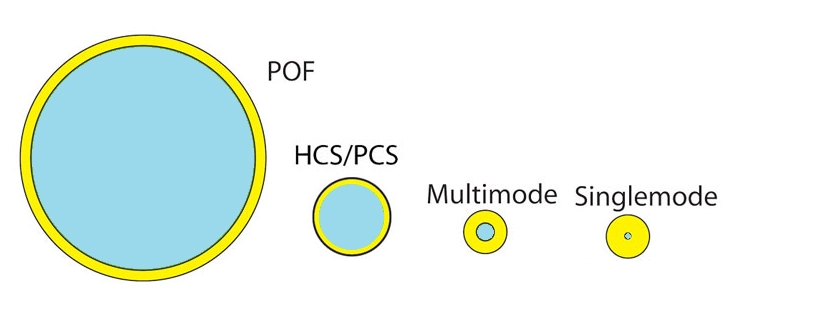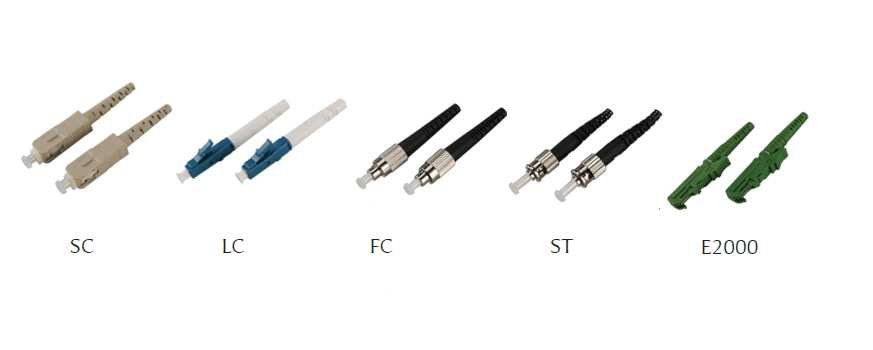What Kinds of Optical Fibers Do You Know?
Optical fibers can be divided according to the material they are made of. As mentioned in previous post, optical fibers can be made of glass, but they can also be made of plastic. Both of the materials have their pros and cons.
The fibers made of glass are great for long-distance transmission, but are very expensive. They are divided into two different types: Single mode and Multimode. The main difference between both of them is the core diameter and the number of light bundles in the fiber. Single mode fibers allow only one beam of light to be transmitted, and Multimode fibers can transmit multiple light beams at a time.
As we already said, we also know optical fibers made of plastic, also called POF fibers (Polymer optic fiber). Plastic fibers are used at shorter distances and have a larger core diameter. Their transmission routes are less reliable than the ones of glass fibers, but their main gain is the low cost. Plastic fibers are, compared to the glass ones, really inexpensive. So if we combine both, pros and cons, we can conclude that plastic fiber are mainly used on short distances (inside our homes etc.) to lower the cost. Most of the time, POFs at home are found in connecting audio devices. The attenuation for fiberglass is 0.2dB / Km, for POF this is 100dB / Km.

What Kinds of Optical Fibers Do You Know?
A huge part of human population has an access to the worldwide internet and if we are lucky enough to live in a bigger city, there is a good chance that our internet providers are not only able to offer us an internet connection through copper fibers, but through optical fiber as well.
According to the topology used by the ISP-Internet Service Provider, there is an optical fiber that leads to our houses. Mainly the fibers that lead to our homes are known as Single mode optical fibers (search above for an explanation) which are best suited for long distance transmissions. The connection is tailored to the economic and physical capacities, and most providers provide at least two optical fibers for security and faster debugging if some kind of error occurs. However, where economic or physical capacities do not allow the use of two fibers, the providers provide only one optical fiber through which the two-way communication is used.
Depending on the number of fibers, we have an adapted method of communication between the modem and the control panel. The simplest solution is if there are two optical fibers available. In this case one of the fibers represents the TX receiving fiber and the other optical fiber represents the transmitting fiber – RX. Depending on the number of optical fibers that are available, the entire system, which includes the technology in the switchboard and the modem or the receiving side, must also be adapted.
In case we do not have enough (at least two) optical fibers, we use Bi-direction connection, which means that we use one optical fiber for the two-way communication and connection. The way this works is that the system uses two wavelengths. One wavelength is used for TX (Transmit) and the other one is used for RX (Receive).
Unlike Single mode optical fibers, Multi mode optical fibers are mainly represented in very old communication routes. They are most commonly encountered in older LAN extensions with Media Converters. The problem with these fibers is that they are harder to bond and have several different core diameters. Technology is older the support is poor.
OPTICAL FIBERS SPLICING

We know two different ways to connect (splice) optical fibers. One way of connecting or splicing two fibers, is with the help of connector. If we chose to use this way of connecting the fibers, we have to be extra careful and pay attention to the kind of the connector we use. There are quite a few different types of connector, but the ones that are most commonly used are SC, LC, FC, E-2000 connectors. If choosing this way of connecting the fibers we also have to consider the surface areas of the fibers we are splicing. This means that wa have to pay special attention to the grinding angle.
Another way of splicing the optical fibers is the permanent welding of optical fibers. This way of splicing requires special equipment suitable for welding a particular type of optical fiber. The work itself is precise and demanding, and also includes the complex preparation of the optical fiber before splicing. Proper and quality preparation of the fiber and the joint is of paramount importance, since it later affects the quality of the transmission route itself. This way of splicing optical fibers is better than connecting the fibers with connectors, because the joints and routes are more reliable and the attenuation is lower.


